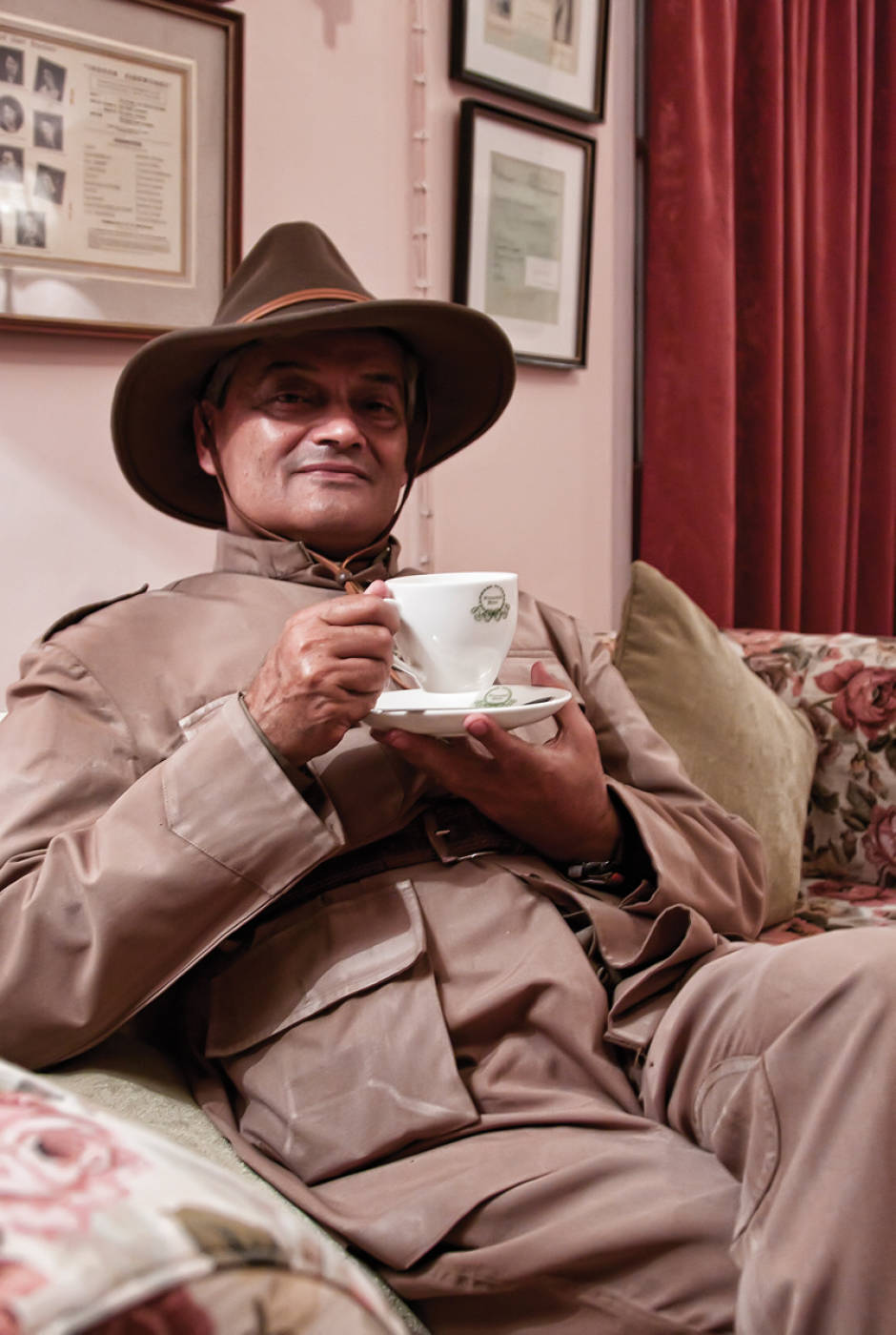
Taking tea with the Godfather of Darjeeling
Darjeeling and its surrounding villages all have a shabby look about them but in the chic-est way imaginable as the streets are clean, homes painted vibrant colours and front yards immaculately swept – and the smiling locals are genuinely happy to see visitors who, after their world-famous tea, are their next biggest source of income.
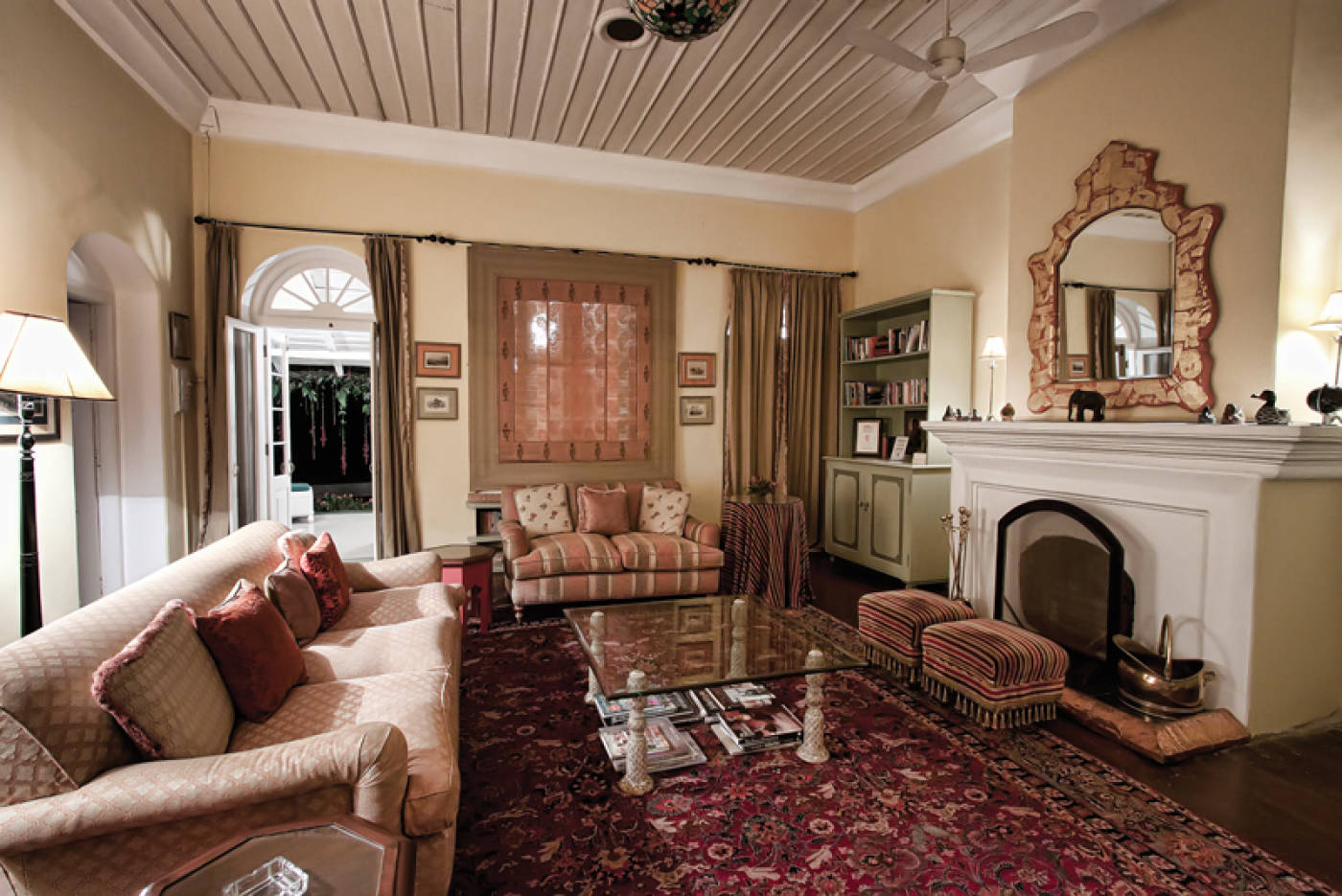
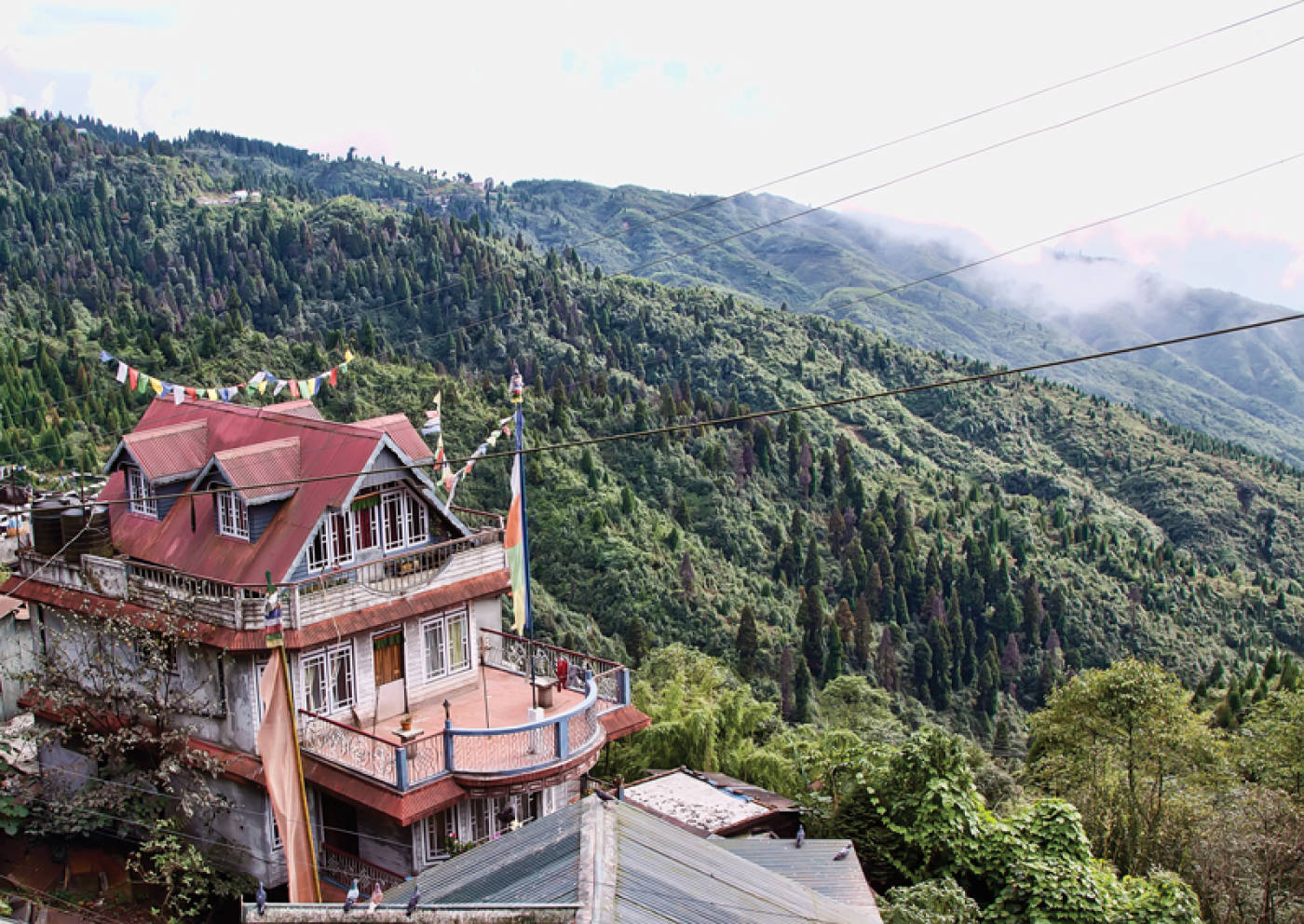
I checked into Darjeeling’s elegant Windamere Hotel; a gracious Colonial gem with grand views of the surrounding tea and cardamom estates as well as the Himalayan mountain range.
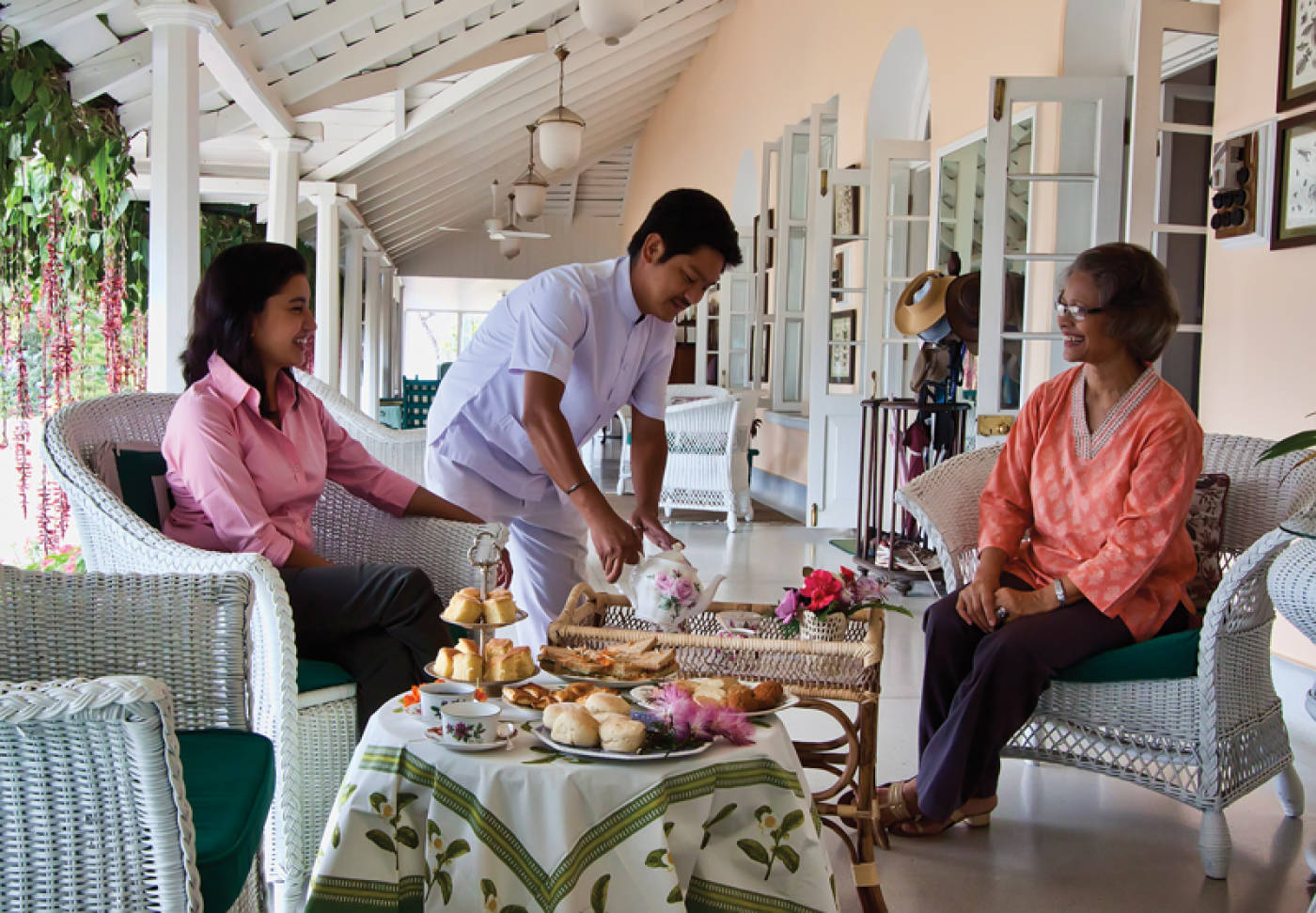
Old rituals of politeness and respect hold sway in Darjeeling. Here turbaned staff serve afternoon tea in cosy, inviting corners in the library or front parlour where books and newspapers are loosely strewn around. The deep Victorian sofas, immense gilded paintings and framed photographs of stiffly posing people are somewhat reminiscent of a lived in museum, especially so with Vera Lynn playing on a gramophone somewhere. Similarly the landscaped garden, with its quiet crevices and moss-softened corners, adds a touch of nobility and piety to the stone structure.
Whilst enjoying afternoon tea at the Windamere I happened across a charming, somewhat eccentric local, Rajah Banerjee, who looked very sharp in his colonial khaki’s. He was making a tremendous fuss over how tea should be poured and drunk. It gave me immense pleasure to learn that my late Father was not the rough-neck my Mother claimed him to be when he drunk tea from his saucer.
‘Not at all’, said Rajah, ‘that is possibly one of the better ways to enjoy tea.’
Rajah is a fourth generation Bengali tea farmer, highly regarded by the locals who refer to him as the Godfather of Darjeeling tea. He relayed accounts of the wonderful life on Makaibari, his 670 hectare tea estate, to a captive audience of fellow guests who rapidly swelled in numbers as late afternoon progressed into early evening. I encountered most of them the following day when I was welcomed to the tea factory built by his great grandfather, and watched tea, quite literally, being handmade.
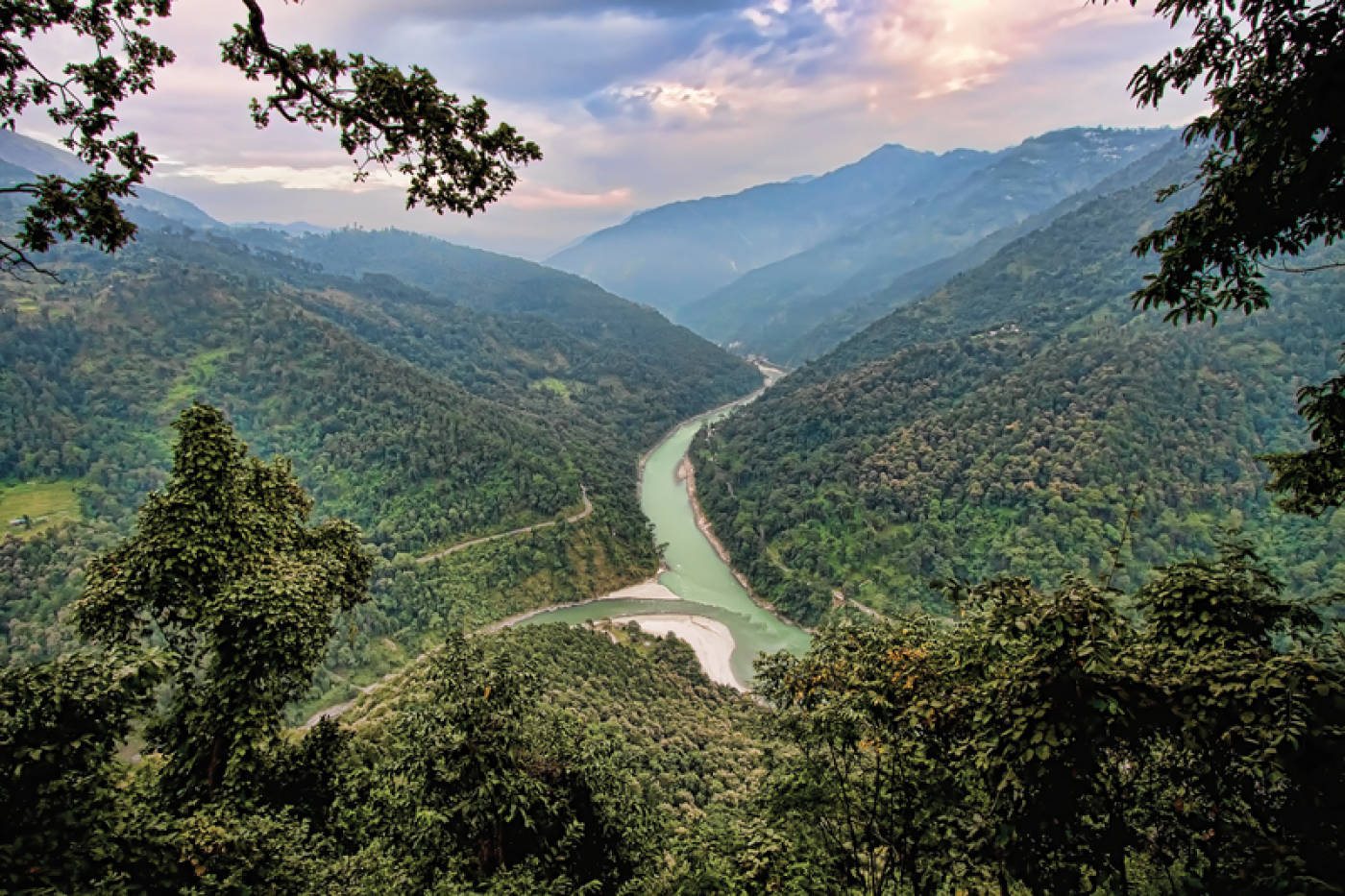
Rajah Banerjee is a Darjeeling legend and has done more for Darjeeling tea than anyone else. Back in 1988, he turned organic, which means no chemical fertilizers were used; four years later he became the world’s first fully biodynamic tea estate.
Makaibari teas are grown through practices of permaculture which is the tiering of leguminous shade trees, the mulch banks of grasses and seasonal legumes, as well as fruit trees. A variety of herbs and the compost that villagers harvest from their cattle to manure the fields all go to making the traditional botanicals found in the two hectares of virgin sub-tropical rain forest which surrounds every hectare of tea.
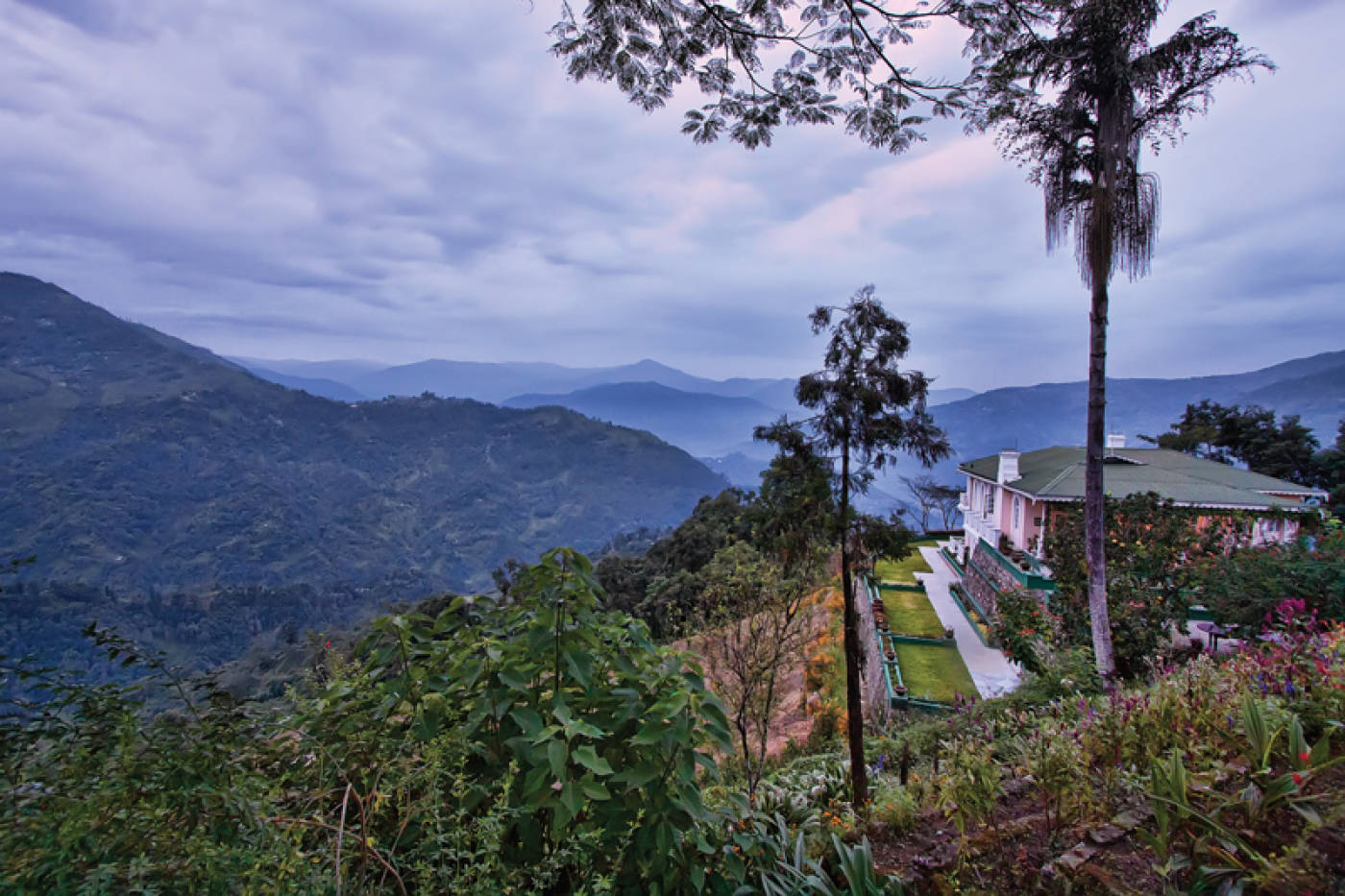
‘Here in the Himalayas, rare herbs have been in use for more than 500 years for crop protection, so sustainable practices have been in place for some time already. I’ve just built onto that and now the onerous task of bearing the torch for tea is singularly mine.’
This philosophy has drawn professionals and environmentalists from around the world.
Makaibari spans 670 hectares over six separate ridges but the tea covers only 270 hectares while to the woodlands cover twice that area. Rajah even employs 12 forest rangers to monitor the progress of its wildlife. Within the Makaibari Estate various species of insects, butterflies, birds and animal flourish – three species of monkeys live in their woods. Elephants were sighted in February, and more recently, panthers.
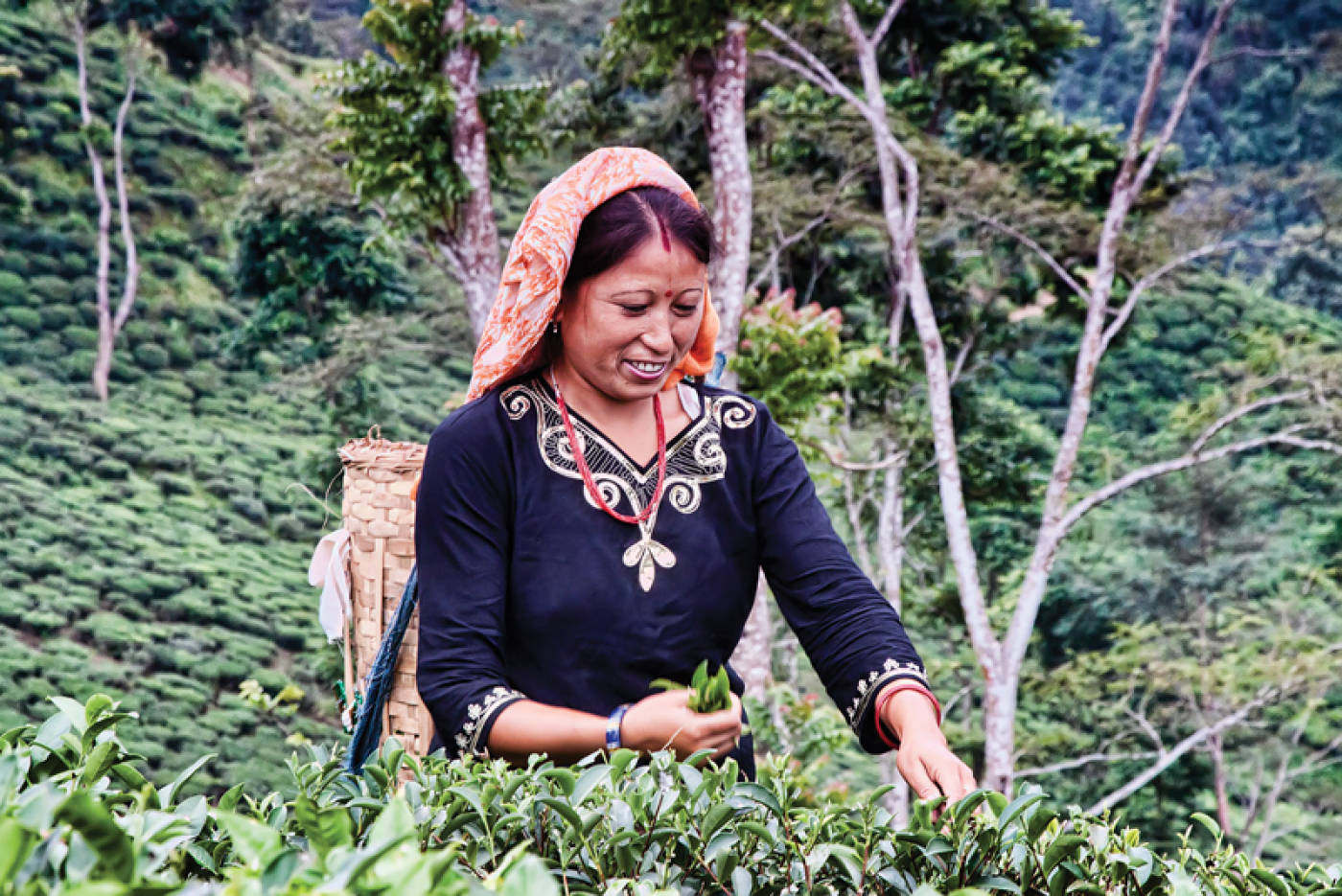
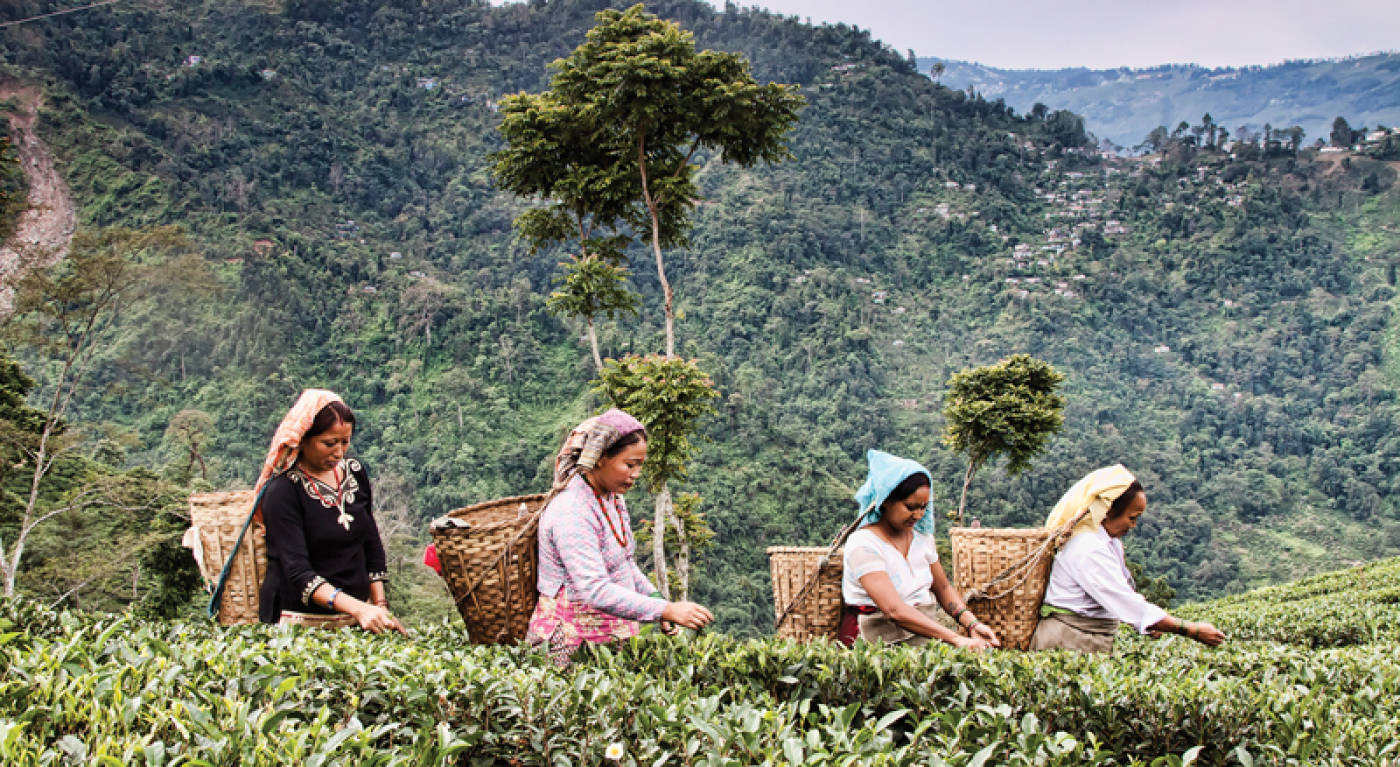
The tasting room, adjacent to Rajah’s office, was furnished with a long rickety table on which six cups stood, each filled with tea, squatting adjacent to its mother container bearing the world’s most respected five-petaled flower logo signifying Makaibari Tea Estate. About three grams of processed tea is measured into a quarter-pint pot. This is filled with water just boiled and left for exactly four minutes. The tea liquor is then poured out into a cup of the same capacity and the infused leaves are turned out into the cap of the pot for inspection. I sipped each tea, using a teaspoon, rolling it around my tongue somewhat akin to a wine taster. Finally, I spat out the contents into a spittoon before moving onto the next sample. First was the Silver Tips Imperial (which is harvested in moonlight and fetched a world-record Rs 52,000 per kilogram at the Beijing World Expo); then Bai-mu-Dan – a white tea leaf most sought after by the cosmetic industry; the Silver Green, the First Flush, the Second Flush and finally the Oolong.
‘There is a certain order in which to enjoy Makaibari tea’, Rajah announced. ‘After their inactivity during winter, our tea bushes rouse in the First Flush. This would therefore be the ideal way to begin the day after a good night’s sleep. At midday, when the mind and body begin to sag, the Muscatel of the Second Flush provides stimulus. It embodies the character of the first forces of summer. Mid-afternoon blues are overcome by the vibrancy of Green Tea and the weariness of dusk is dispelled with the gentle rose-like Autumnals – the harbingers of the season’s end. Finally, a delicate cup of Silver Tips lulls one into a celestial slumber.’
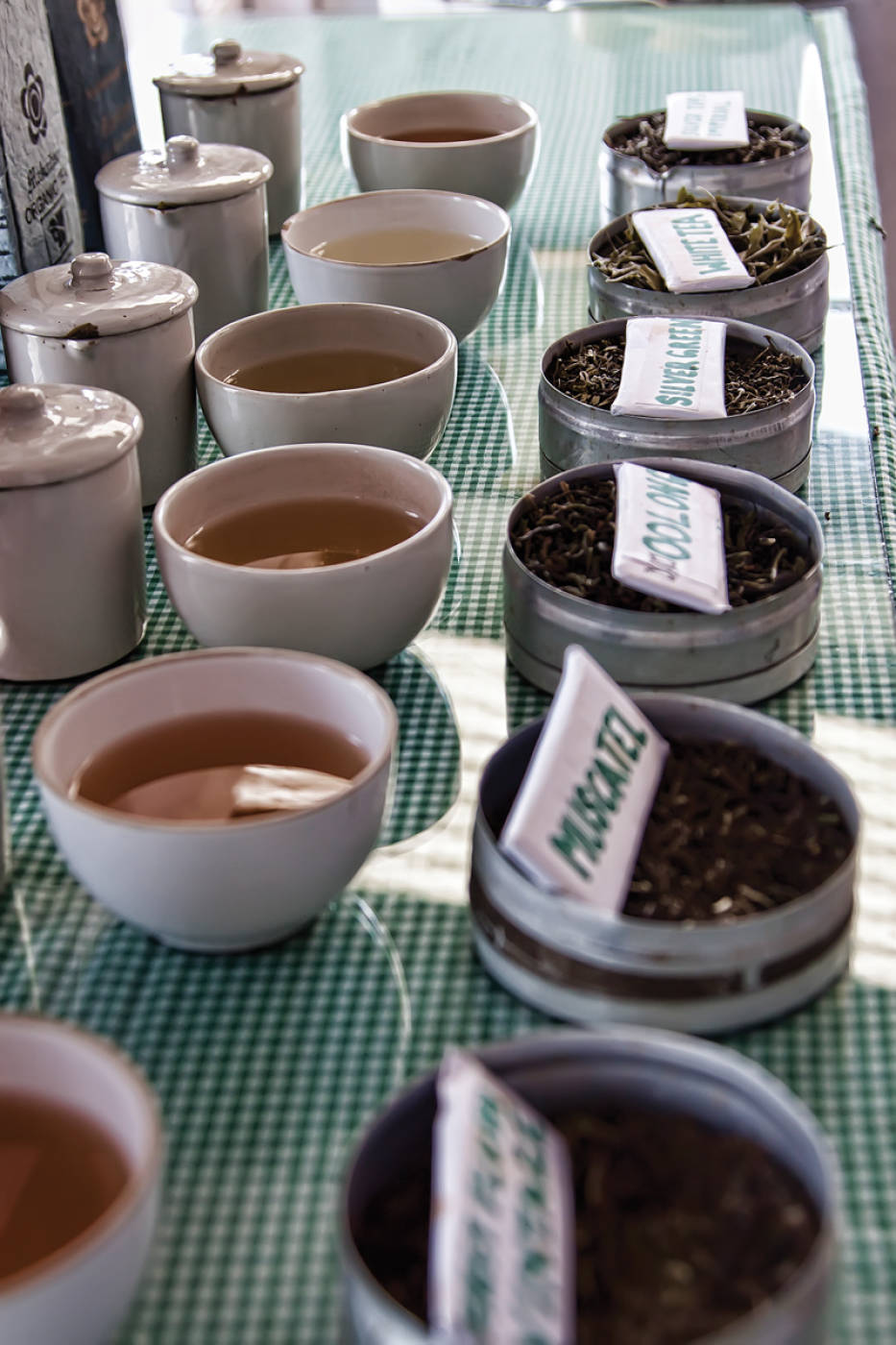
The way in which you consume your tea is crucial to the taste. Slurp it into your mouth with a lot of air – sucking in air as you taste causes a vapour to cover all the surfaces inside your mouth. That way you can give a full analysis covering all the taste buds. Also, you’ll have a film of tea on the roof of your mouth where you’ll find the aftertaste.
‘Back in my grandfather’s day’, explained Rajah, ‘when tea was affordable only to the wealthy, the British used to drink tea relatively cold as the teacups were too hot to handle. Soon saucers accompanied the teacups in an effort to make them easier to hold. However, this was misconstrued as an aid to letting it cool down, so the Brits would pour a little tea into the saucer then sip from it. Eventually, handles were added to the teacups. Yet many nations, like the Iranians, still do drink tea from a saucer.’
Cheered by this affirmation that it was indeed okay, possibly a little eccentric, to drink from a saucer, I bounced along a potholed road on my way to the Glenburn Tea Estate a few miles away.
Glenburn is a working tea plantation and magnificent boutique hotel in a location so mystical it could easily be a set from a Harry Potter movie. It’s tacked onto to the side of a hill with 1,828 acres of tea bushes growing down a near vertical slope to the valley floor and up the opposite hill onto the outskirts of Darjeeling.
Although a 4×4 and driver was available, I decided to take the five-mile downhill hike to the banks of the Rung Dung river where Sanjay Sharma, the plantation manager, had set up afternoon tea in the shade of a large oak.
Sanjay, a genial fellow with a dapper manner, has the lean bearing and far-off gaze of someone whose world is the outdoors. Whilst tea and cake was being served he began explaining the tea making process.
A lasting visual impression of Darjeeling was the sight of Nepalese women plucking tea, clad in brightly coloured saris, wearing bamboo baskets on their backs – the handles of which were strapped firmly around their foreheads.
Following my gaze Sanjay interjected: ‘The reason women do the picking is quite simple. Only small and agile feminine hands and the patient female temperament will do. Plucking tea requires specific skills, in particular dexterity. Our ladies move between the tea bushes, which are spaced roughly a metre apart (and regularly pruned to a height of one and a half metres, to aide plucking) with amazing swiftness and precision. Using both hands, they gather only the youngest and topmost leaves by snapping the stems with a sharp movement of the index and middle fingers.’
He went on to explain that a ‘fine plucking’ of the best teas requires the removal of only the terminal bud and the first two leaves below it. The more common teas are produced from a ‘coarse plucking’, which includes the bud and three, four or even five leaves. Once the pluckers have filled their baskets they return to an assembly point where the leaves are inspected and weighed before being transported to the tea estate factory, which is a long white building, typically occupying the end of a valley, which looks somewhat like an Alpine hotel transferred to the tropics.
‘The secret of making good quality tea,’ Sanjay continued, ‘is in the perfection of the various stages in the processing of the raw leaf. Precise timing at every step along the way is vital.’ Over another cup of tea he went on to explain the withering process (which reduced the moisture content by half), roll breaking (a process that breaks up the twisted balls of leaves), the fermentation – the crucial operation that endows black tea with its colour and subtle flavour.
We decanted to a 4×4 which Sanjay fired up and bounded of to the tea factory where I was shown the final stage of sorting and grading which is another oscillated mechanical device used for sorting the tea for grading purposes. This was done by way of gradually decreasing sieve sizes allowing the larger tea leaves to remain at the top and the broken leaves at the bottom.
Back at the lodge, Glenburn’s consummate hostess, Najma Ahmed, greeted me warmly at the veranda which is buried in deep red Mysorium blooms. I was invited for afternoon tea under the eaves where my fellow guests had congregated in anticipation. It’s a grand silver service affair at Glenburn, with Glenburn brand Darjeeling tea and a delicious assortment of cakes and scones presented in the finest of china.
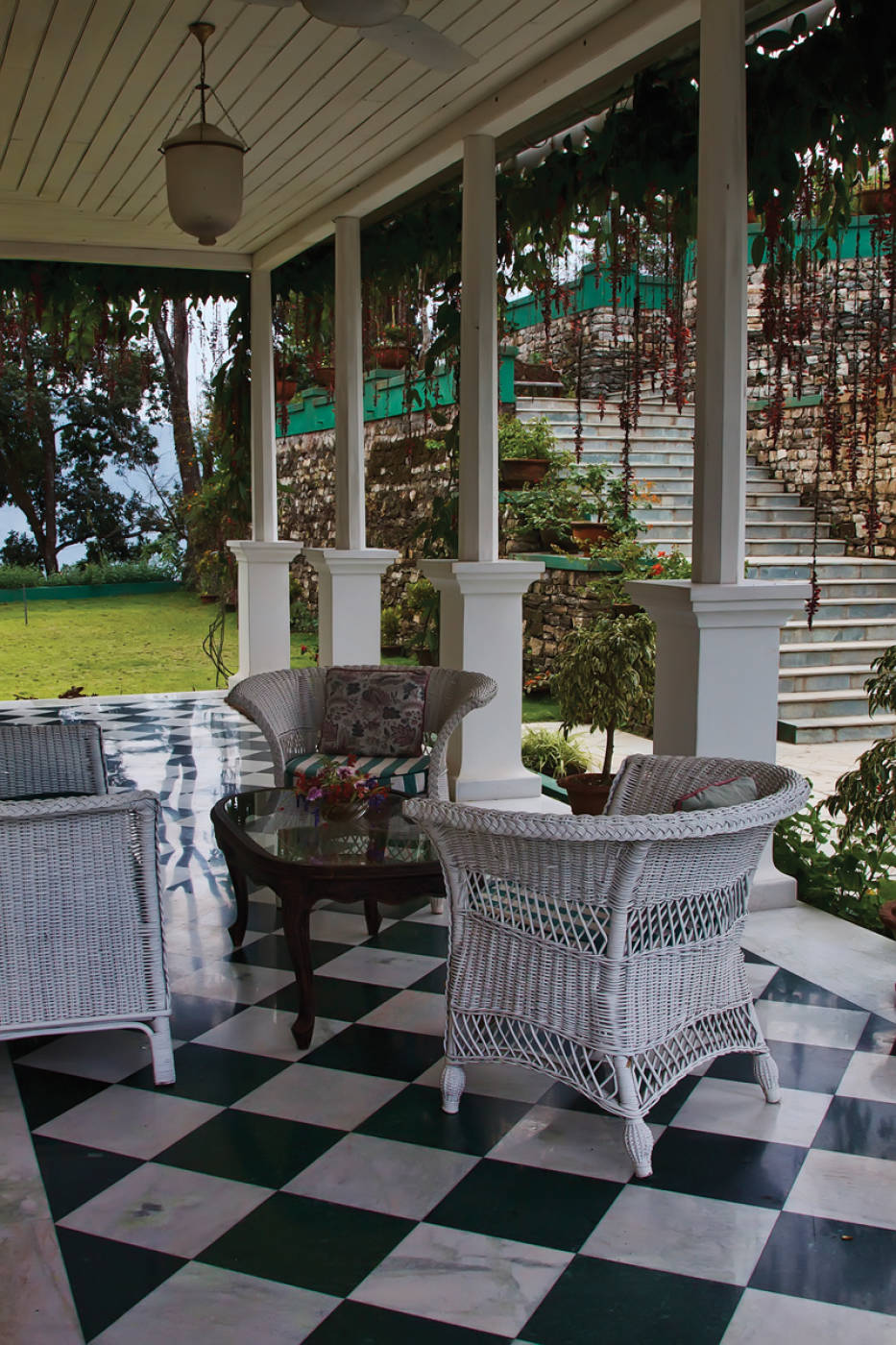
Later, I wandered to the edge of the veranda where Sanjay stood, cup in hand. He was looking out across a precipice of Glenburn’s estate. Swirling mist encircled our ankles and a light breeze danced with our hair. Before us lay a mystic valley in hues of blue and lavender, stitched with wisps of silver mist; I was half expecting a dragon to swoop into view – instead the branches of the surrounding trees hung heavy with birds who were jostling with one another for a suitable vantage point from which to drink in this timelessly fetching visa.
Accommodations
Glenburn Tea Estate – Glenburn has two plantation bungalows, each with four spacious suites and a riot of blooms encasing the verandas. I stayed at the Burra Plantation Bungalow, the focal point of Glenburn’s hospitality and home to generations of planters. All the suites are decorated in an elegant Cath Kidson style. Most have turn of the century four-poster beds with refurbished teak floors and authentic Victorian baths and rose or wisteria etchings on the furniture and drapes. Framed still-life oils and old maps are a constant, so too are birds and butterflies – delicately embroidered on the linens. Most of the suites have adjoining rooms and private verandas with long views of the garden. Evenings are for dressing up and start with cocktails and hors d’oeuvres around a bonfire, followed by superb food served at one of India’s most exclusive dinner tables.
www.glenburnteaestate.com
Windamere Hotel – The Windamere oozes history and each of its 27 colonial suites remain exactly as they were back in the old days (there are also 13 conventional guest rooms). My spacious suite consisted of twin beds, a lounge, dressing room (with an additional bed), and a Victorian bathroom (with power shower). When returning from an especially good massage, I discovered my chambermaid had visited. She had lit a crackling log fire and turned back my bed covers, slipping a hot-water bottle in between the sheets. It’s a time-warp of clean air, delicious local cuisine, homely English charm and genteel tranquillity. There are deliberately no televisions in the colonial rooms – even the vintage telephones purposely don’t work. However, for guests seeking modern day trappings, the conventional suites are all in the 21st century. Beside a sacred shrine where multi-coloured prayer flags double as trapezes for the monkeys, the Windamere Hotel, which sits some 2,200 metres above sea level, is the only structure on Observatory Hill and offers one of the world’s most sought-after views – that of soft green hills hunched over by the snow-capped Himalayas. It’s doubly impressive at dawn when the soft sound of prayer bells and Buddhist chants make it especially romantic. It’s so quiet and peaceful you can actually hear the memories, which all goes to making the Windamere more than just a hotel – it’s a destination. www.windamerehotel.com
Makaibari is one of the three tea estates to introduce tea tourism to Darjeeling and have three home-stay cottages (with Western facilities), which are usually occupied by travellers who plan to stay for several months and have research work to carry out.
www.makaibari.com
Afternoon tea in Kolkata
On a busy crossroads along Park Street – Kolkata’s equivalent of Fifth Avenue – is Flurys, India’s iconic tea room. www.flurysindia.com
It’s a little haven of art deco magnificence with spacious polished interiors, domed ceilings and a black and white chequered floor. Its interiors are not chintzy, nor are they trendy, what they are is soft chocolate brown and plum with a little gold leaf detail, floral baskets in cake-icing hues, sloping mirrors, crystal chandeliers and three-tiered cakes – which all go to resemble the innards of a rich sensual chocolate.
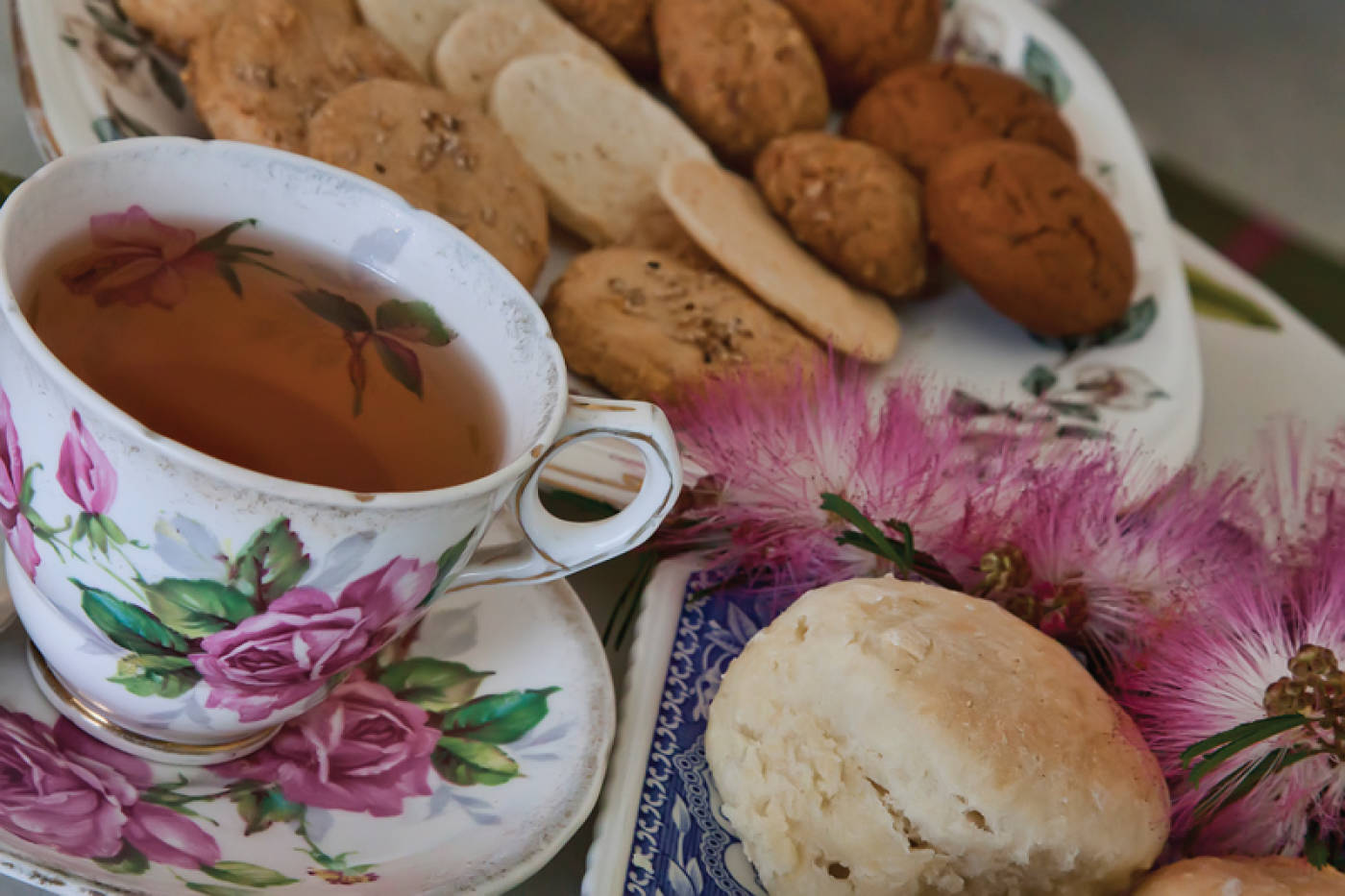
Pink-tied waiters usher patrons to the silk ribboned tables and pull back marzipan and cocoa striped chairs for the ladies who have all left their diets at the door.
The luxury collection of cakes on the menu is wickedness personified: Deep, New York style Forest Cheesecake; Triple Chocolate Passion; Blackcurrant Gateaux; Raspberry Ruffle; and Lemon Mimosa – evidently the firm favourite at an adjoining table of IT professionals, who were analysing its three layers of lemon sponge, filled with fresh lemon curd and mascarpone mousse coated in sponge cubes and dusted with icing sugar. Unable to consume all put before me, leftovers were prettily packed into a sensual pink box with chocolate lettering.
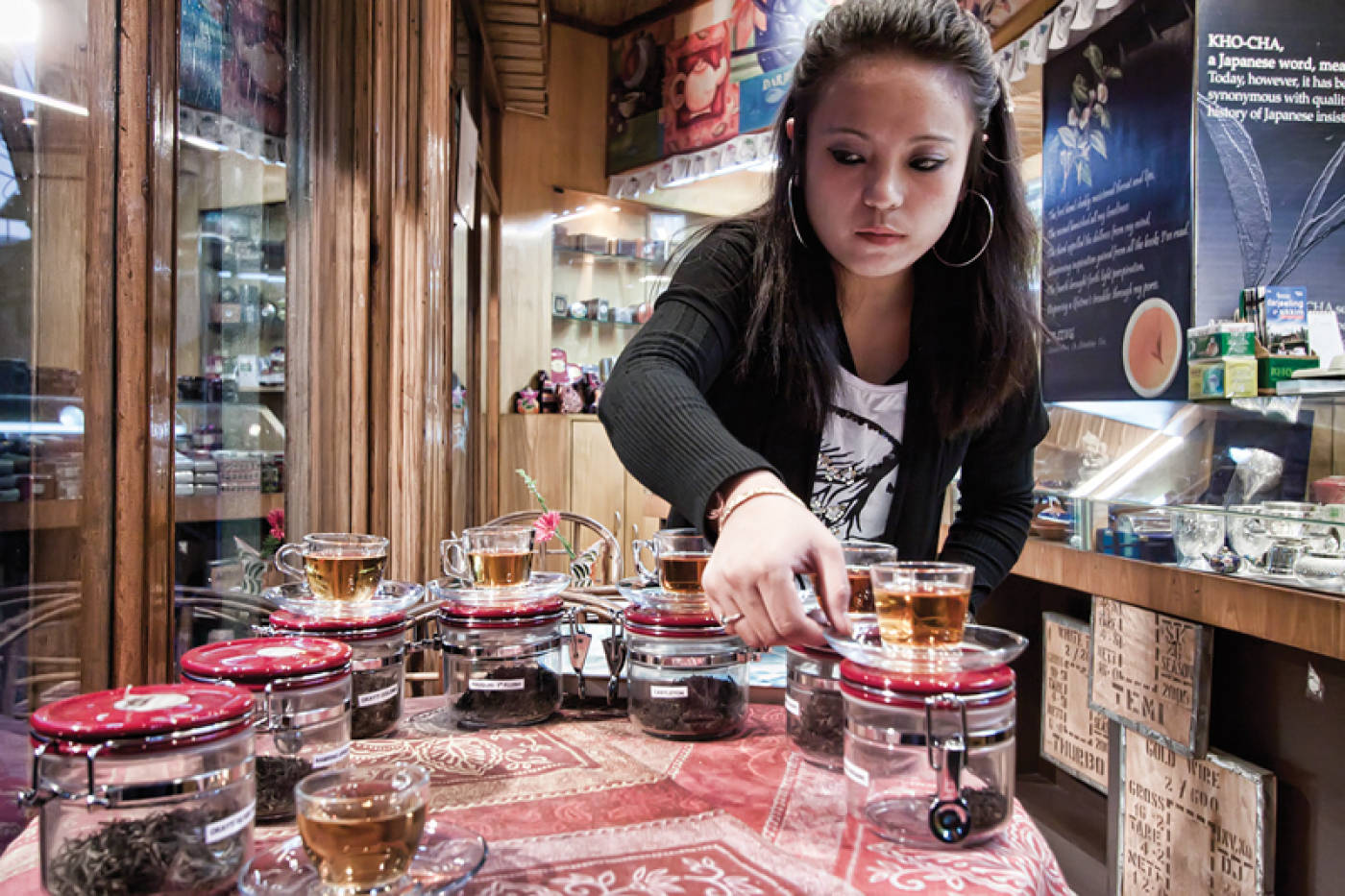
Having survived the bazaars and the oppressive heat, a visit to Flurys is a rite of passage, I’ve been told. It’s a reminder of a colonial past with a French café twist – Flurys is an event to the locals, a place to be seen. It’s in Kolkata’s DNA and without a doubt, India’s most glamorous tea room.
But if you’ve not yet overdosed on tea you must rendezvous with other tea lovers at Dolly’s Tea Shop in the Dakshinapan Shopping Complex, Gariahat Road South. The décor is unfussy – the external façade depicts a thatched hut and inside bright lanterns light up walls which are lined with old tea chests. But it’s the bizarre tea brews such as Tea Punch (laced with ginger ale and lemonade) and Tutti Frutti Tea (with fruit, ice-cream and jam) that have made Dolly’s the institution it is. Teas for gifting get an individual Dolly touch with jute, cane, bamboo and ceramic wrapping.